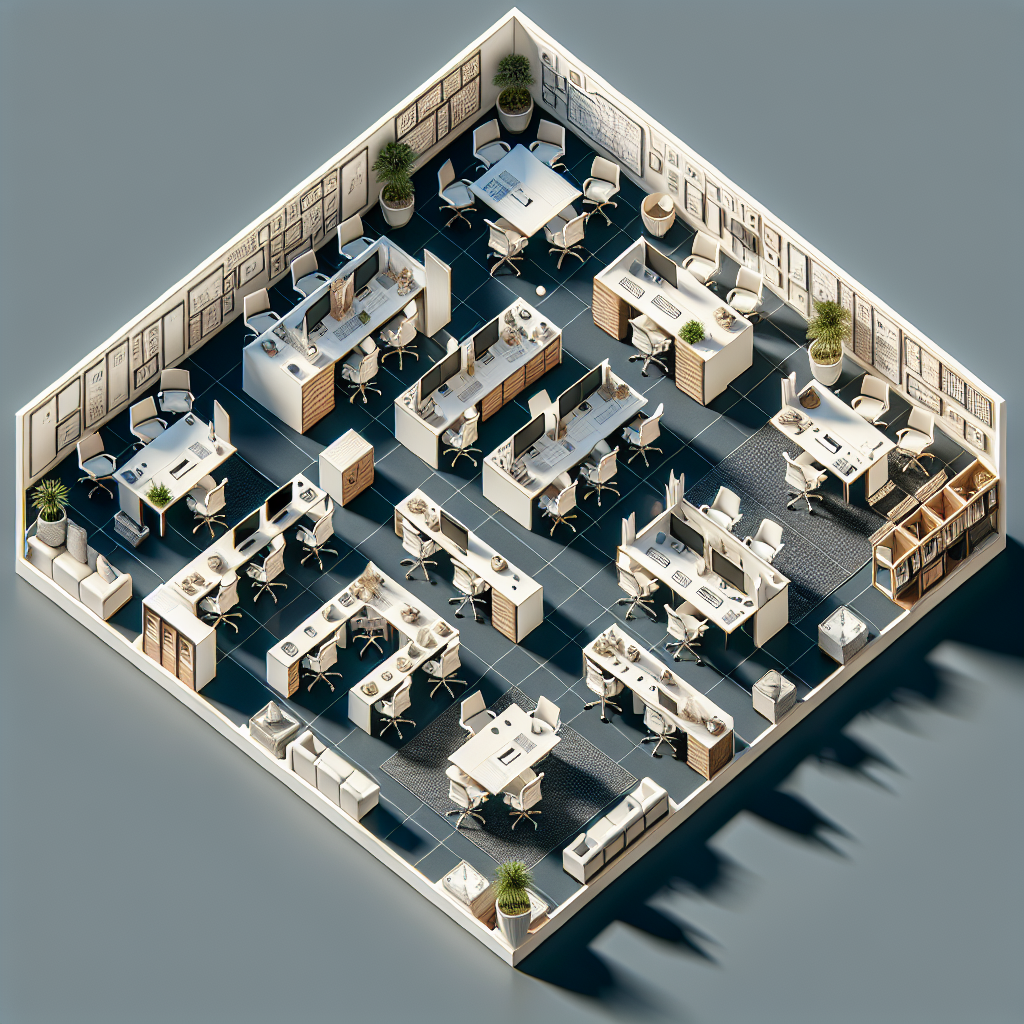| Key Point | Description |
|---|---|
| Importance of Office Layouts | A well-thought-out office layout can improve productivity and morale. |
| Ergonomics in Office Design | Ergonomic furniture is critical for health and productivity. |
| Types of Office Layouts | Different layouts (open plan, cubicle, team) serve different needs. |
| Flexibility & Adaptability | Modular furniture is ideal for dynamically changing spaces. |
| Collaborative Spaces | Zones for teamwork boost communication and innovation. |
| Sustainability & Future-Proofing | Eco-friendly and technologically adaptive furniture is essential. |
| Budget-Friendly Solutions | Stylish, functional furniture doesn’t have to be expensive. |
Understanding The Importance of Office Layouts
Designing an office layout is more than arranging desks and chairs. An efficient and thoughtfully designed office can significantly boost productivity, enhance employee morale, and foster a positive company culture. It's an investment in your business's future.
Ergonomics in Office Layout
Ergonomics plays a critical role in office design, ensuring that employees are comfortable, healthy, and productive. Ergonomically designed office furniture can prevent injuries and improve overall work performance. When planning your office layout, prioritize ergonomic furniture that supports good posture and reduces physical strain.
For more insights, check out Guide to Selecting Furniture for Tech Startups.
Types of Office Layouts
Open Plan Layouts
Open plans don’t have walls separating employees, fostering a collaborative environment. However, they can sometimes be noisy and distracting.
Cubicle Layouts
Cubicles provide a balance between privacy and openness. They give employees their own space while still being part of a larger office environment.
Team/Department Layouts
This layout groups together team members from the same department to encourage collaboration and streamline workflows. It's particularly effective for projects requiring frequent interaction.
For more examples, visit Small Business and Startups Office Design.
Designing For Flexibility
Startups often experience rapid changes, and their office space should adapt to these changes. Modular furniture that can be reconfigured easily is ideal. This flexibility allows you to modify your layout as per the evolving needs of your business.
Explore adaptable solutions at Branch Furniture for Startups.
Collaborative Spaces and Meeting Areas
Creating designated zones for team collaboration is essential. These areas should encourage communication and teamwork, from formal meeting rooms to informal breakout spaces for spontaneous discussions.
Sustainability and Future-Proofing
Choosing sustainable furniture not only reduces your environmental footprint but also aligns with modern business values. Additionally, considering future technological needs when selecting furniture, such as desks with built-in cable management systems, ensures your office remains functional as technology advances.
For trends in future-proofing, see Furniture Startups.
Budget-Friendly Solutions
Budget is always a constraint, especially for startups. However, a limited budget doesn't mean compromising on style or functionality. Look for budget-friendly options that meet your needs without breaking the bank.
Find more on budget-friendly solutions here.
Conclusion
Designing an office layout requires careful consideration of various factors, from ergonomics to flexibility, sustainability, and budget. By planning thoughtfully, you can create a workspace that fosters productivity and reflects your company’s culture and values. Start small, think big, and let your office layout design grow with your business.
Use these resources to make informed decisions about your office furniture and layout. A well-planned office is the first step towards building a thriving workspace.

